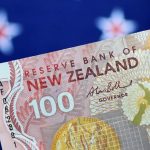
The New Zealand dollar was the worst performer for the day after the Reserve Bank of New Zealand (RBNZ) offered up less hawkish signals during a meeting on Wednesday.
Most other regional units also kept largely within a tight trading range established over the past two weeks, as a string of Federal Reserve officials signaled that the bank was in no hurry to begin cutting interest rates.
The dollar index and dollar index futures rose 0.1% each in Asian trade, as traders steadily priced out expectations of early interest rate cuts by the Fed.
Focus this week was squarely on PCE price index data- the Fed’s preferred inflation gauge, for more cues on when the central bank could potentially begin trimming rates.
But the reading is expected to show inflation remaining sticky in January, with stubborn inflation being a key point of contention for the Fed.
Before the PCE data, a second reading on fourth-quarter GDP is due later on Wednesday.
The New Zealand dollar was by far the worst performer among its peers on Wednesday, sliding 1% to a near two-week low.
The Reserve Bank of New Zealand held interest rates steady at 5.5%, but flagged more progress in inflation moving towards its 1% to 3% annual target.
While the bank still signaled that it will keep interest rates higher for longer in the near-term, its comments saw traders largely price out expectations of any more rate hikes, which had been a point of focus going into Wednesday’s meeting.
Westpac analysts said that the RBNZ was likely to keep rates on hold until 2025.
The Australian dollar fell 0.4% as consumer price index data showed inflation remained at over two-year lows in January.
The reading offset a recent warning from the Reserve Bank of Australia that sticky inflation could invite more rate hikes in 2024.
But the reading still remained well above the RBA’s 2% to 3% annual target, which is likely to see the bank keep rates higher for longer.
Other Asian currencies trended lower. The Japanese yen weakened further beyond the 150 level, although steeper losses were limited by the prospect of early interest rate hikes and government intervention.
The Chinese yuan was flat ahead of key purchasing managers index data for February, due this Friday.
The South Korean won lost 0.3%, while the Singapore dollar shed 0.1%.
The Indian rupee steadied around 82.9 to the dollar, but stuck largely to a recently-established trading range.
To read the full article, Click Here

